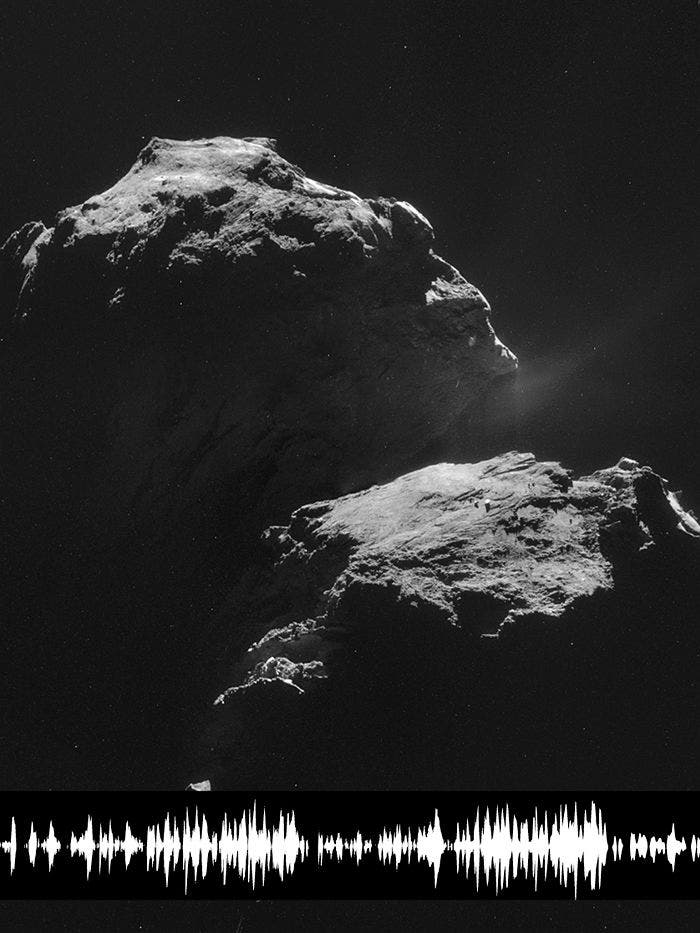
As I am writing this, the Rosetta mission’s lander, Philae, is mid way through its landing on a comet. If everything works out, this will be the first time humans have landed anything on a comet and will provide valuable information about not only the comet in particular, but also our solar system in general.
*UPDATE* Rosetta’s final ‘go’ has been given, the landing attempt will start today in just a few minutes!
But as Rosetta was zooming in on its destination, machines picked up a very strange signal coming from Comet 67P/Churyumov-Gerasimenko. Through some kind of interaction in the comet’s environment, 67P’s weak magnetic field seems to be oscillating at low frequencies. Scientists amplified the frequencies 10,000 times to make them audible for the human ear.
It’s still not clear exactly why this “singing” is happening, but researchers believe the oscillations may be driven by the ionisation of neutral particles from the comet’s jets. Basically, the comet’s nucleus and coma are surrounded by jets of vapor and dust which interact with the solar wind – a stream of plasma released from the upper atmosphere of the Sun, consisting mostly of electrons and protons.
As they are released into space, these particles become ionized, and because they are ionized, they interact with the comet’s magnetic field, causing the oscillations we have now picked up. But before a definitive answer is given, more research is needed.
“This is exciting because it is completely new to us,” says Karl-Heinz Glaßmeier, head of Space Physics and Space Sensorics at the Technische Universität Braunschweig, Germany. “We did not expect this and we are still working to understand the physics of what is happening.”
Hopefully, the mission will work out as planned and the lander will be successful in making its way on the surface of the comet. We’ll keep you posted!






